Jewish History Books for Young Adults: The Holocaust (Page 5) |
If you wish to purchase any of these books, click on either the title or the book cover to be directed to Amazon.com. As a warning, I have put up pictures of the book covers to give you somewhat an idea of the style of each book (I know, I know. "Don't judge a book by its cover") so the pages may load slowly, depending on the speed of your internet connection.
If this page came up without frames, Click here to see the complete website
NOTE: For biographies of individuals associated with the Holocaust (Anne Frank,
Simon Wiesenthal, etc.), go to the
Biographies
For historical fiction books that take place during the Holocaust, go to the
Holocaust Historical Fiction Books Page
For Holocaust books for younger readers, go to the Children's History Page
Other Pages of Interest:
Holocaust History Books For Middle School and Young Adult Readers ...
(Page 1)
(Page 2)
(Page 3)
(Page 4)
(Page 5)
(Page 6)
Holocaust Historical Fiction Books For Middle School and Young Adult Readers ...
(Page 1)
(Page 2)
(Page 3)
(Page 4)
(Page 5)
(Page 6)
Middle School and YA Books ...
Bar Mitzvah Books |
Jewish Fiction |
Historical Fiction |
Torah Study |
Prayer and Jewish Life Books |
Jewish Holidays |
Jewish Biographies |
Jewish History Books |
Holocaust Books for Teens |
Israel Books
Jewish Historical Fiction for Middle School and YA Readers...
Biblical Era |
Middle Ages, Renaissance, and the Spanish Inquisition |
Immigration & The American Experience |
European History |
Holocaust
(Page 1)
(Page 2)
(Page 3)
(Page 4)
(Page 5)
(Page 6) |
Israel
Jewish History Books for Middle School and Young Adult Readers ...
General Jewish History & Nonfiction |
Biblical Era |
European History (Excluding the Holocaust) |
Immigration & The American Experience |
Holocaust |
Israel
Easy Reader and Picture Books ...
Jewish Children's Books (General) |
Jewish Board Books |
Biblical Stories for Children |
Jewish Holiday Books |
Jewish Family Cookbooks |
Folktales and Talmudic Stories for Children |
Jewish Life Books (Mitzvot, Keeping Kosher, etc.) |
Jewish Life Cycle Books |
Family Haggadahs |
Children's Prayerbooks |
Introductory Hebrew Books |
Jewish History and Historical Fiction Picture Books |
Israel Books
And More ...
Jewish Books for Children |
Bar Mitzvah Books |
Jewish Parenting Books |
Hanukkah Books |
Jewish Music for Children |
Jewish Videos |
Jewish Toys and Gifts |
Jewish Gift Baskets and Gourmet Food |
Jewish Jewelry |
Amazon.com Coupons, Promotions, and Sales
NOTE: For biographies of individuals associated with the Holocaust (Anne Frank,
Simon Wiesenthal, etc.), go to the
Biographies
For historical fiction books that take place during the Holocaust, go to the
Holocaust Historical Fiction Books Page
For Holocaust books for younger readers, go to the Children's History Page
Other Pages of Interest:
Holocaust History Books For Middle School and Young Adult Readers ...
(Page 1)
(Page 2)
(Page 3)
(Page 4)
(Page 5)
(Page 6)
Holocaust Historical Fiction Books For Middle School and Young Adult Readers ...
(Page 1)
(Page 2)
(Page 3)
(Page 4)
(Page 5)
(Page 6)
Middle School and YA Books ...
Bar Mitzvah Books |
Jewish Fiction |
Historical Fiction |
Torah Study |
Prayer and Jewish Life Books |
Jewish Holidays |
Jewish Biographies |
Jewish History Books |
Holocaust Books for Teens |
Israel Books
Jewish Historical Fiction for Middle School and YA Readers...
Biblical Era |
Middle Ages, Renaissance, and the Spanish Inquisition |
Immigration & The American Experience |
European History |
Holocaust
(Page 1)
(Page 2)
(Page 3)
(Page 4)
(Page 5)
(Page 6) |
Israel
Jewish History Books for Middle School and Young Adult Readers ...
General Jewish History & Nonfiction |
Biblical Era |
European History (Excluding the Holocaust) |
Immigration & The American Experience |
Holocaust |
Israel
Easy Reader and Picture Books ...
Jewish Children's Books (General) |
Jewish Board Books |
Biblical Stories for Children |
Jewish Holiday Books |
Jewish Family Cookbooks |
Folktales and Talmudic Stories for Children |
Jewish Life Books (Mitzvot, Keeping Kosher, etc.) |
Jewish Life Cycle Books |
Family Haggadahs |
Children's Prayerbooks |
Introductory Hebrew Books |
Jewish History and Historical Fiction Picture Books |
Israel Books
And More ...
Jewish Books for Children |
Bar Mitzvah Books |
Jewish Parenting Books |
Hanukkah Books |
Jewish Music for Children |
Jewish Videos |
Jewish Toys and Gifts |
Jewish Gift Baskets and Gourmet Food |
Jewish Jewelry |
Amazon.com Coupons, Promotions, and Sales
Other Pages of Interest:
Holocaust History Books For Middle School and Young Adult Readers ...
(Page 1)
(Page 2)
(Page 3)
(Page 4)
(Page 5)
(Page 6)
Holocaust Historical Fiction Books For Middle School and Young Adult Readers ...
(Page 1)
(Page 2)
(Page 3)
(Page 4)
(Page 5)
(Page 6)
Middle School and YA Books ...
Bar Mitzvah Books |
Jewish Fiction |
Historical Fiction |
Torah Study |
Prayer and Jewish Life Books |
Jewish Holidays |
Jewish Biographies |
Jewish History Books |
Holocaust Books for Teens |
Israel Books
Jewish Historical Fiction for Middle School and YA Readers...
Biblical Era |
Middle Ages, Renaissance, and the Spanish Inquisition |
Immigration & The American Experience |
European History |
Holocaust
(Page 1)
(Page 2)
(Page 3)
(Page 4)
(Page 5)
(Page 6) |
Israel
Jewish History Books for Middle School and Young Adult Readers ...
General Jewish History & Nonfiction |
Biblical Era |
European History (Excluding the Holocaust) |
Immigration & The American Experience |
Holocaust |
Israel
Easy Reader and Picture Books ...
Jewish Children's Books (General) |
Jewish Board Books |
Biblical Stories for Children |
Jewish Holiday Books |
Jewish Family Cookbooks |
Folktales and Talmudic Stories for Children |
Jewish Life Books (Mitzvot, Keeping Kosher, etc.) |
Jewish Life Cycle Books |
Family Haggadahs |
Children's Prayerbooks |
Introductory Hebrew Books |
Jewish History and Historical Fiction Picture Books |
Israel Books
And More ...
Jewish Books for Children |
Bar Mitzvah Books |
Jewish Parenting Books |
Hanukkah Books |
Jewish Music for Children |
Jewish Videos |
Jewish Toys and Gifts |
Jewish Gift Baskets and Gourmet Food |
Jewish Jewelry |
Amazon.com Coupons, Promotions, and Sales
Holocaust Historical Fiction Books For Middle School and Young Adult Readers ... (Page 1) (Page 2) (Page 3) (Page 4) (Page 5) (Page 6)
Middle School and YA Books ... Bar Mitzvah Books | Jewish Fiction | Historical Fiction | Torah Study | Prayer and Jewish Life Books | Jewish Holidays | Jewish Biographies | Jewish History Books | Holocaust Books for Teens | Israel Books
Jewish Historical Fiction for Middle School and YA Readers... Biblical Era | Middle Ages, Renaissance, and the Spanish Inquisition | Immigration & The American Experience | European History | Holocaust (Page 1) (Page 2) (Page 3) (Page 4) (Page 5) (Page 6) | Israel
Jewish History Books for Middle School and Young Adult Readers ... General Jewish History & Nonfiction | Biblical Era | European History (Excluding the Holocaust) | Immigration & The American Experience | Holocaust | Israel
Easy Reader and Picture Books ... Jewish Children's Books (General) | Jewish Board Books | Biblical Stories for Children | Jewish Holiday Books | Jewish Family Cookbooks | Folktales and Talmudic Stories for Children | Jewish Life Books (Mitzvot, Keeping Kosher, etc.) | Jewish Life Cycle Books | Family Haggadahs | Children's Prayerbooks | Introductory Hebrew Books | Jewish History and Historical Fiction Picture Books | Israel Books
And More ... Jewish Books for Children | Bar Mitzvah Books | Jewish Parenting Books | Hanukkah Books | Jewish Music for Children | Jewish Videos | Jewish Toys and Gifts | Jewish Gift Baskets and Gourmet Food | Jewish Jewelry | Amazon.com Coupons, Promotions, and Sales
 Because of Romek : A Holocaust Survivor's Memoir By David Faber |
Young David Faber survived the horrors of the Holocaust because of Romek and
because of a vow he made. Romek was his older brother, a Resister whom David
watched tortured and murdered by the Nazis. That was at the beginning of the
persecution of the Jews. The vow David made to his mother was simply that he
would live. The true experiences related in this memoir left this reader first
breathless, then chilled, then nearly numb. To say more would lessen the impact
for the next reader. Just order it and read it now! The story of David's
survival in the Ghetto, in flight and in hiding, in the Partisan band, and
in the concentration camp is simply-written but powerful. These days Mr. Faber
is a sought-after speaker at San Diego middle-schools and high-schools. Students
rarely fail to be moved by the courage and endurance of a 15-year-old child of
the Holocaust. This book really should be required reading, alongside Anne Frank's
Diary
of a Young Girl and Inna Konstantinova's journal in "Defending Leningrad".
| ||||||||||||||||||||||||||||||||
 Dear Cara : Letters From Otto Frank Anne's Father Shares His Wisdom By Cara Weiss Wilson & Otto Frank |
The Diary of Anne Frank, one of our enduring inspirational books, was written by a young girl who died in a Nazi concentration camp in World War II. Otto Frank, her father and the only family survivor, motivated people all over the world to carry on Anne's message of love and hope in their own lives. Otto never wanted Anne remembered as a victim but as a living spirit through her words. A generation later, a young American girl began conversations with Otto through letters reflecting her own chaotic teenage years and the violence in America in the 1960s and '70s. His responses helped her mature into a loving, trusting woman. Cara Weiss Wilson wrote this book from her extraordinary correspondence with Otto and the inspiration she drew from it. He validated her need to be heard and respected; he became her mentor, her wise "grandfather," as he was for so many others. He taught the importance of tolerance and true spirituality, focusing on the power of love, not revenge. He said, "If the world were ending tomorrow, I would still plant a tree today." He truly lived his message. Cara's twenty-year correspondence with Otto culminated in a memorable meeting shortly before his death, and influenced the rest of her turbulent life. Her remarkable book helps others lead fulfilling lives and renews our faith in the possibility of forgiveness and optimism.
| ||||||||||||||||||||||||||||||||
 The Last Seven Months of Anne Frank By Willy Lindwer (YA Readers) |
The "unwritten" final chapter of
Anne
Frank: Diary Of A Young Girl tells the story of the time between
Anne Frank's arrest and her death through the testimony of six Jewish
women who survived the hell from which Anne Frank never retumed.
Lindwer presents the transcripts of six in-depth interviews conducted in preparation for his film documentary, The Last Seven Months of Anne Frank . Although "Lies Goosens,'' real name Hannah Elisabeth Pick-Goslar, will be the most familiar to readers of Anne Frank: The Diary of a Young Girl , each of these women's first-person accounts is compelling. They relate their backgrounds, their capture, details of the concentration camp experience, and descriptions of the time immediately following liberation. Each includes her relationship to Anne Frank and gives impressions of the girl's final days. This collage of intimate recollections paints a clear picture of the human experience known as the Holocaust. Few will be able to digest this book in one sitting; fewer still will be able to turn away from it once they've begun.
|
 Holocaust: Survival and Resistance By Pat Levy
How and why could a tragedy of the magnitude of the Holocaust take place? Using primary sources and eyewitness testimony, these volumes help young readers find their own answers. Maps of European Jewish population centers and concentration camps put events in geographic perspective. A guide to resources points researchers to museums, books, and Web sites.
| Both Jews and non-Jews led valiant efforts against Hitler's massacre. Accounts of the 1943 Warsaw ghetto uprising, escape from the Treblinka death camp, and the sacrifices of Oskar Schindler and Raoul Wallenberg add a noble note to terrible times. Focused on specific aspects of the Holocaust, eliminating military history and providing only limited details about the major people involved, this series gets right to the subject matter and presents it succinctly. These short volumes are good for students younger than those targeted by most Holocaust materials because of their clarity and well-organized presentations. They are designed attractively and are chock full of information, sidebars of added facts, excerpts from the writings of victims, and illustrations, several of which are thought-provoking and focused on particular persons. The Death Camps and Survival and Resistance volumes look at the six death camps in Poland, covering camp life, major people, the dismantling of the camps, and incidents of resistance, escape, and rescue. Several factual inconsistencies become apparent but do not lessen the value of the books. The most glaring is in the description of Theresienstadt in Survival and Resistance: "a model camp where life, although harsh, was not deadly. Many survived." About 140,000 people were sent to the camp, where approximately 33,000 died of disease and starvation and another 85,000 were sent on to extermination camps where they died. The same section states, "200,000 of Hungary's Jews were killed." In The Death Camps, a sidebar maintains that Auschwitz workers gassed "almost 500,000 Hungarian Jews in less than two months." Despite these concerns, the Holocaust series will help students to understand the Holocaust, and it will be particularly useful for detailing how certain events led to others.
|
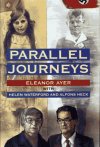 Parallel Journeys By Eleanor H. Ayer
This is a book to make your blood run cold. Through Ayer's
narrative and excerpts from Heck's memoirs, A Child of
Hitler and The Burden of Hitler's Legacy, readers
learn how Alfons changed from a loving, wholesome boy to a
"Nazi devil" (even the Germans called the elite Hitler Youth
by that name). It is frightening to see how easily young
people can be swayed, and readers learn just how it happened.
Alternating chapters reveal Helen Waterford's story through
excerpts from her book, Commitment to the Dead, and Ayer's
background material.
| Fleeing with her fiancee to Amsterdam after Kristallnacht, Helen was again caught in the Nazi noose and struggled to survive. As her plight grew more desperate, Alfons rose higher and higher in the Hitler Youth. Eventually, when he and his ragged corps faced annihilation by the Russians, he realized how Hitler had sacrificed his "children." When Alfons and Helen met in the U.S. 40 years after the war, they found that they shared a common purpose: to help young people understand that peace and compassion are possible between individuals, and on a larger scale as well. Their first-person accounts are interwoven with Ayer's words so seamlessly that readers are unaware of the intrusion of a third person. She is an excellent biographer, capturing nuances of her subjects' characters and personality traits. A fascinating work.
|
 Auschwitz: Explained to My Child By Annette Wieviorka
A French historian whose grandparents died in the Holocaust answers her thirteen-year-old daughter's questions about that historic event, including Hitler's rise to power, the establishment of ghettos and concentration camps, and the genocide of the Jews.
| How does one broach with a child or young adult a subject like the Holocaust, the full magnitude and horror of which are difficult even for many adults to comprehend? This book, in conversational format, offers an ideal way to present this difficult subject to a young audience. At the book’s opening, the author and her daughter Mathilde meet Berthe, a friend of the author’s, on the beach, where they see the number that was tattooed on Berthe’s arm at Auschwitz. The book, following Wieviorka’s answers to her daughter’s nearly eighty questions, provides a concise yet unsentimental and unsparing history lesson that explains Hitler’s rise to power and the rise of anti-Semitism, the creation of ghettos and concentration camps (not only Auschwitz), the genocide of the Jews, the "Final Solution," Jewish and other resistance, and the guilt of the Germans.
|
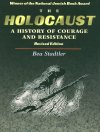 The Holocaust : A History of Courage and Resistance By Bea Stadtler
In simple moving words, The Holocaust: A History Of Courage And Resistance
tells the story of the destruction of six million Jews during World War II. Beginning in
the 1930s, The Holocaust describes the conditions in Germany that led to Hitler's rise
to power and the Nazi policy of destruction. But at the heart of The Holocaust are the
acts of courage and resistance, the stories of the men and women (young and old,
Jewish and Gentile) who fought against Hitler and the Nazis and kept the spirit of
heritage of the Jews alive in this devastating period. The Holocaust is an especially
ideal introduction for young readers to a difficult subject, a tragic time, and the
heroism that emerged from the ashes of despair.
|
|
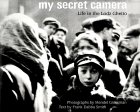 My Secret Camera : Life in the Lodz Ghetto By Mendel Grossman
Powerful photographs taken by a young man confined to a Jewish ghetto
bear witness to life during the Holocaust.
| In 1940 as Nazi troops rolled across Europe, countless Jewish families were forced from their homes into isolated ghettos, labor and concentration camps. In the Lodz Ghetto in Poland, Mendel Grossman refused to surrender to the suffering around him, secretly taking thousands of heartrending photographs documenting the hardship and the struggle for survival woven through the daily lives of the people imprisoned with him. Someday, he hoped, the world would learn the truth. My Secret Camera is his legacy. This remarkable photo-essay about the Lodz Ghetto in Poland poignantly introduces Holocaust horrors. Grossman was a prisoner there for more than four years, and while his "job" was to take photographs for work permits, he secretly used his camera to record the daily lives of his fellow Jewish residents. The text, written as though Grossman himself were explaining how he took the pictures and commenting on the emotions of his subjects, is simple and lets each picture speak for itself. This technique works well and makes the subject accessible to children. The 17 haunting images are not graphic or physically gruesome, but they do show young boys harnessed to carts, men lining up for bread, and families saying horrible good-byes through chain-link fences. They also show people relaxing on the grass, smiling, and singing-a testament to the undying spirit of some prisoners. As these are personal, secret photographs and not the propaganda pictures so often repeated in history books, their significance is great and they are historically fascinating. The incredible story of how the photos have survived is recounted in an appended note. A truly powerful book.
|
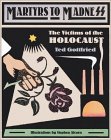 Martyrs to Madness : The Victims of the Holocaust By Ted Gottfried
Gottfried has put a fascinating spin on the Holocaust by writing companion
volumes in which one is devoted to the rise and fall of the tyrants and the
other to the vastness and complexities of their victims. Martyrs follows
the plight of minorities as the Nazis implemented their plans for the Final
Solution. The first half of the book concentrates on the Jewish plight. The
second half presents entire chapters chronicling the fate of the "other
Untermenschen," including Aryan Gypsies (one to four million died),
homosexuals (the Pink Triangle), the physically and mentally ill (as
defined by the Nazis), enormous numbers of civilians and prisoners of war,
and the many who resisted. Nazi Germany traces the origins of both Hitler
and the National Socialist Democratic Party through the years of rejection
to the years of tyranny. Students will see how the tangle of Hitler's
erratic upbringing and narcissistic personality, the humiliating German
defeat in World War I, and the easy scapegoating of Jews and other
minorities combined inexorably to create the monster that was the Third
Reich. Chapters in both titles are clearly organized and relatively short,
with subsections creatively labeled: "The Flip-Flop Flunky" provides a
startlingly clear image of Joseph Goebbels, for example, and "Lists and
Lies" describes the careful choreography involved in convincing deportees
that death did not await them. Replete with maps, photographs, dramatic
graphics, and well-organized and visually accessible texts, these books
also contain parallel thought-provoking afterwords and extensive chapter
notes. Fine additions to Holocaust collections.
|
|
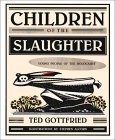 Children of the Slaughter: Young People of the Holocaust By Ted Gottfried
Among the victims of the Nazis in World War II were more than a million young people. This includes those who died at the hands of the Nazis directly as well as those who died as a result of the war, whether from disease, neglect, or any number of causes brought on by the horrible conditions that resulted from the war and Nazi aggression.
| But the effect of the Holocaust on children does not begin and end with the war years, nor does it end with those we traditionally view as victims of the Holocaust. The legacy of the Holocaust reaches beyond time and ethnic identity to rob generations of young people of the security of a fully realized childhood. The Nazis' persecution of Jews and others did not exclude children; indeed, children who were too young or weak to be of use to the Nazi war effort were often the most expendable. Jewish children experienced being driven from their homes, and witnessed the breakup of their families, and the death of loved ones, and came to learn that they were hated on the basis of their religion and their ethnicity. German children, and those loyal to the Nazi leadership, in turn, were victimized by a society that viewed them as cannon fodder -- a resource to be used to insure the future of Adolf Hitler's vision of a racially purified and powerful Europe. These young people, under the guise of the Hitler Youth, were also robbed of childhood with dire consequences. The children of Holocaust survivors and victims bore the brunt of the grief, sadness, and guilt that were by-products of this horrible episode in history. And as modern-day Jewish and German young people, in particular, struggle with the legacy of the Holocaust, all people can benefit from learning of this legacy to help to prevent its happening again. This unique and instructive treatment discusses the one-and-a-half million young Jewish victims of the genocide (and the murder of other young people who belonged to minority groups); the German youth brainwashed and exploited by Hitler's totalitarian regime; and, most tellingly, the children of survivors and of their Nazi oppressors and supporters. Supplementing his clear narrative with full-page, black-and-white historical photos, Gottfried traces the sad history of how the non-Jewish population in Nazi-occupied countries (especially in France, Poland, and Hungary) aided their occupiers in killing Jews-especially the young and infirm. (He pointedly excludes Denmark and Bulgaria from this list because the political leaders of both countries refused to cooperate with the Nazis.) The book clearly makes the point that "the Holocaust was a tragedy for all children" because for 10 years it legitimized genocide and racism in Western civilization, leaving a destructive imprint on and forming a dark legacy for future generations. The author concludes that only by accepting the truth of the Holocaust and understanding its horror can "the children of today safeguard the children of tomorrow." Based on the premise that German children, as well as Jewish children, suffered during the Nazi regime, this book discusses the Holocaust from both perspectives. The rigorous discipline of the Hitler Youth movement, which trained ten-year-old boys to use machine guns, is presented as one of many Nazi atrocities. But Gottfried makes it clear that while 4,500 boys died in the Battle of Berlin and many more German children were stripped of their childhood, they were not abused in medical experiments and/or gassed to death. Too many complex topics such as Nazi propaganda, the Nuremberg laws, hidden children and survivor guilt are touched upon in ninety-seven pages of textbook-like prose. Yet Gottfried does raise thoughtful questions, especially in the chapters that discuss modern German youth and their attempts to come to terms with their country's bloody history. The difficulties that survivors faced after the war in DP camps are also given adequate attention. A limited number of archival pictures set inside the same black and green color scheme of the illustrations provides some added stimulation. Readers will need to investigate the listed bibliography or Internet sites for in-depth understanding. This is an entry in "The Holocaust" series. Gottfried adds four more titles to his Holocaust series, following Nazi Germany and Martyrs to Madness. Children of the Slaughter does a credible job of discussing the effect of the Holocaust not only on the Jewish children but also on the German youngsters who were forced to join the Hitler youth and on the offspring of Holocaust survivors. The plight of the Jews did not end when World War II was over. Displaced Persons chronicles the atrocities against those who survived Nazi terrorism. In their desperate search for a homeland, many Jewish survivors sought refuge in Palestine, a journey described by Gottfried here. Deniers of the Holocaust provides an in-depth look at the people and organizations that claim the Holocaust never happened. This book looks at the rise of Nazi-affiliated groups, explores the technique of moral relativism, and examines the current use of the Internet by the ring of deniers. This volume is devoted to topics often overlooked or treated briefly in other Holocaust series. Heroes of the Holocaust shares many stories of people, religious or political organizations, and countries that sheltered Jews, resisted Nazi policies, and rescued victims destined to die. It also tells of the heroic efforts by many from the Jewish population itself. Text in each book is written in a straightforward, easy-to-read manner. The material will be useful for research reports as well as personal reading for those interested in the subject. Similar in format, each book is set in large type with wide margins, and one clear black-and-white photograph per chapter. Chapters are titled with subheadings attractively set off by a contrasting colorthat coordinates with the end papers and book jacket. The dramatic cover artwork, end papers, and chapter dividers compliment the series.
|
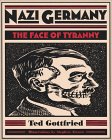 Nazi Germany : The Face of Tyranny By Ted Gottfried
Describes the Nazis' rise to power in Germany and their efforts to conquer Europe, as well as their full-scale war against Jews and others.
|
|
 Displaced Persons: The Liberation and Abuse of Holocaust Survivors By Ted Gottfried
Displaced Persons looks at the suffering of survivors immediately following the war, when many people returned "home" to face racism, displacement, even massacre, and when countries, including the U.S., denied shelter to most refugees. Gottfried touches on topics ranging from the rise of Zionism and the revival of hope to the birth of the nation of Israel, including the displacement of the Palestinians who lived there. The books are rich with topics for discussion, and the documentation is meticulous, with source notes, a bibliography, and Web site listings. The spacious design, with lots of subheads, photos, and dramatic woodcuts at the start of each chapter, makes the books very readable.
|
|
 Deniers of the Holocaust: Who They Are, What They Do, Why They Do It By Ted Gottfried
It is a historical event as well documented as any other, if not more so. Its sad legacy has affected generations of people all over the world. To deny it seems ludicrous. There were countless eyewitnesses and many survivors. Yet there is a population that claims the Holocaust never happened.
| Denial of the Holocaust runs the gamut from outright refusal to believe that those events took place; to acknowledgment that Jewish people died in large numbers, although, it is claimed, that was due to the hardships of World War II; to justification of Nazi brutality and sympathy for the Nazi cause. Who are the people who deny the Holocaust? They are scholars, historians, and others who seek to create their own version of history -- a history based on lies and half-truths. They encourage others to adopt their way of thinking, thereby furthering their cause and that of the Nazis. They use the Internet to try and sway young people who may be open to their powerful suggestions. They use the First Amendment as a shield from behind which they spread their messages of hate. They employ moral relativism to shift attention off the Holocaust: Groups of people have been persecuted throughout history, and continue to be persecuted, they say. Why should the Holocaust be viewed differently? The majority of people understand that facts are facts, and that this denial of historical truth is based on bigotry and hatred. Learning about Holocaust denial, and how and why it is done, reinforces the truth. Perhaps examining the theories and methods of deniers, rather than ignoring or hiding them, can expose those theories and methods for the foolish, destructive, hate-based lies that they are. Many believe that we should pay no attention to contemporary deniers of the Holocaust, refusing them the publicity that comes with a reply. But not Gottfried. In Deniers, he answers lunatic arguments clearly, proving a truth so horrifying that it seems unbelievable. He goes on to show that the deniers and today's racists, including white supremacists, are cut from the same cloth, and discusses Internet hate sites, issues of free speech, and the dangers of moral relativism. The books are rich with topics for discussion, and the documentation is meticulous, with source notes, a bibliography, and Web site listings. The spacious design, with lots of subheads, photos, and dramatic woodcuts at the start of each chapter, makes the books very readable.
|
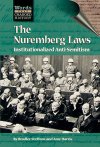 The Nuremberg Laws : Institutionalized Anti-Semitism (Words That Changed History Series,) By Amy Newman
Adolf Hitler enacted the Nuremberg Laws to segregate the Jews from the rest of Nazi Germany. Hitler was not the only one to advocate these measures; many Germans caught up in nationalistic fervor blamed the Jews for Germany's misfortunes and saw these laws as necessary.
| The horrific background, development, and enactment of the laws that became the foundation for the Holocaust are carefully and thoroughly chronicled. Newman shows the systematic creation of these laws starting with the end of World War I and the use of the Jews as scapegoats for Germany's economic problems. In tracing anti-Semitism back to Roman times, the author proves that the Nuremberg Laws "did not spring from a vacuum," but were rooted in the political and social past. Sidebars highlight important aspects of the different eras. The final chapters show that the temperament that instigated these laws still exists today in various forms and places. Newman concludes with a discussion of neo-Nazis, ethnic cleansing, apartheid, and racial prejudice to underscore the need for awareness as an antidote to these forms of hatred. An excellent, readable research resource.
|
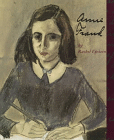 Anne Frank (First Books - Biographies) By Rachel Epstein
This accessible biography provides historical background for better understanding of
the events surrounding Anne's diary entries. Epstein focuses on Anne but puts her
experiences in the context of what was happening in Europe in the 1940s. Archival
photos and schematic drawings of the building that housed the secret annex supplement
the readable text. The last chapter discusses how Anne's diary was found and published.
|
|
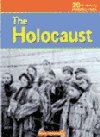 The Holocaust (20th Century Perspectives) By Susan Willoughby
This series examines the causes and effects of six of the most important events in the last century. Each title provides in-depth background information and detailed descriptions of the event, while also considering the issues at stake, the people involved, the aftermath, and consequences.
|
|
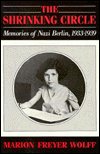 The Shrinking Circle: Memories of Nazi Berlin, 1933-1939 Marion Freyer Wolff Teacher's Guide Also Available
This autobiographical ac-count of a young girl's life in Nazi Berlin covers the period from Hitler's rise to power through the outbreak of World War II. It includes tales of Kristallnacht, the disappearance of friends and relatives, and a family's frantic efforts at emigration. Ideal for junior high school readers.
|
|
 Bearing Witness : Stories of the Holocaust By Hazel Rochman
From a comprehensive list of sources including poetry, novels, autobiographies, and first-person interviews,
the authors have carefully chosen moving excerpts to bear witness to the events of the Holocaust. Beginning
with stories of going into hiding and of daily life under Nazi edicts and restrictions, the selections move on to
the brutal and terrifying experiences in the death camps and end with the liberation of the camps and accounts
of survivors. As the authors say in the introduction about the variety of materials used, "Each writer finds a
form to give voice to the unspeakable." The collection offers remarkable insights and will be invaluable to
studies of the Holocaust.
|
|
The Holocaust Series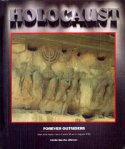 Forever Outsiders: Jews and History from Ancient Times to August 1935 By Linda Jacobs Altman 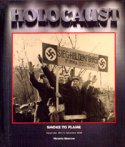 Smoke to Flame: September 1935 to December 1938 By Victoria Sherrow 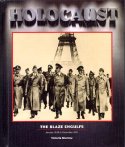 The Blaze Engulfs: January 1939 to December 1941 By Victoria Sherrow 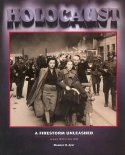 Firestorm Unleashed: January 1942 to June 1943 By Eleanor H. Ayer 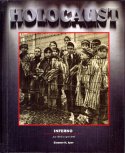 Inferno: June 1943 to May 1945 By Eleanor H. Ayer 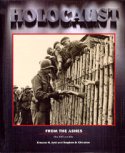 From the Ashes: May 1945 and After By Eleanor H. Ayer 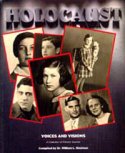 Voices and Visions: A Collection of Primary Sources By William Schulman 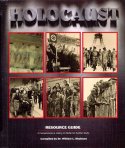 Holocaust Resource Guide: A Comprehensive Listing of Media for Further Study By William L. Shulman, President, Association of Holocaust Organizations 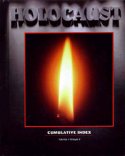 Holocaust: Cumulative Index By Elizabeth Kniss  Teacher's Guide By William L. Shulman
Few events of the twentieth century have affected the world as profoundly as the Holocaust. Today, more than half a century after it ended, the Holocaust remains a highly complex and compelling subject - one that continues to inform and influence the current events and ethical issues that confront us. In this comprehensive series, the story of the Holocaust is told within its broad historical context, year by year. With a text that blends historical narrative and primary sources, each volume explores the unique aspects and events that shaped each significant time period.
| There is a growing awareness in the educational community that an in-depth discussion of the Holocaust is critical to any understanding of modern history. It can also be an effective way to sensitize students to the essential concepts of compassion and tolerance. The eight volumes offered here form a unique perspective on these important themes. The comprehensive coverage they provide is at the heart of this landmark series Starred Review An authoritative, readable, comprehensive history that is especially well designed for classroom and group discussion as well as for personal reading. With a chronological account of what happened, the authors raise searching questions of why it happened and what it means for us now...The series design is clear and readable in a magazine-type, photo-essay format, with many subheads, inserts, maps, and stirring historical photographs. Everything is fully documented in chapter notes at the back This fine new Holocaust series is impeccably researched and well presented with a wealth of good-quality black-and-white photos from various archives. Quotes are woven into the narratives, and relevant background information appears in boxes that are interspersed throughout, yet there is nothing stilted or text-bookish in either the writing or format. Book One provides a social and economic history of the Jews, shaped and punctuated by repeated acts of persecution, actions that in modern times lead to the growth of Zionism and the Holocaust. Book Two is a description of and commentary on the increasing anti-Semitism and restrictions upon the Jews, first in Germany and then in other countries as conditions deteriorated and panic escalated throughout Europe. Book Three begins with Germany's invasion of Poland and Czechoslovakia, and ends with the forming of the Axis partners, including Russia, Japan, and Italy, whose fascist dictator had once scorned Hitler and who had good relations with Jews. Those who helped the Jews are not neglected, nor are the complex relations between Poles and Jews. The presence of little known information and quotes throughout reveal the depth of the author's research. Book Four records the full fury of the Holocaust as Germany implemented the genocide of the Jews. Book Five chronicles the last battles, resistance, rescue, and liberation. It includes a discussion of the plight of the Displaced Persons (DPs) and of U. S. President Harry Truman's efforts on their behalf. Book Six continues the story of the DP camps, homelessness, and the creation of the state of Israel. It describes the Nuremberg Trials and the fate of many Nazis after the war. The volume closes with instances of other genocides and poses the moral injunction: "To Be a Bystander Is to Share in the Guilt." Book Seven consists of chronologically arranged primary-source documents that can be used with the first six books or can stand alone. Book Eight contains a topical annotated bibliography coded by reading levels, a list of illustrated books (art and photo-essays, but not children's picture books), a topical annotated videography, listings of Web sites and CD-ROMS, and museums and resource centers. An outstanding set.
|
